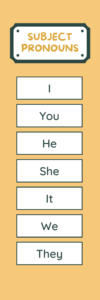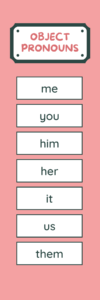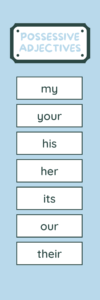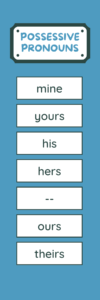Pronouns are words that are used in place of a noun or a group of words that function together as a noun. Pronouns are classified according to whether they refer to specific or unspecific things, people, or places.
There are also reflexive and collaborative pronouns. Reflexive pronouns are used when the subject and the object of a verb are the same. Collaborative pronouns are used when two or more people are working together. Some examples of collaborative pronouns include: let’s, ours, and yours.
Definite pronouns are used to refer to specific people or things that are known to the speaker or writer. Examples of definite pronouns include: he, she, it, they, them, their, ours, yours, and itself. Indefinite pronouns are used to refer to people or things that are not specific. Examples of indefinite pronouns include: all, another, any, anybody, anyone, anything, each, everybody, everyone, everything, few, many, nobody, none, one, several, some, somebody, and something.
Subject pronouns are used as the subject of a sentence, meaning they typically come before the verb.
For example:
I am going to the store.
You are a great friend.
He is taller than me.
subject pronouns exercises FREE Download.
Object pronouns are used as the object of a sentence, meaning they typically come after the verb.
For example:
The teacher called me.
Can you pass the salt, please?
I don’t see them.
Reciprocal pronouns are words that indicate that two or more people or things are doing something together. Reciprocal pronouns are used to show that people are doing something together. Some examples of reciprocal pronouns are: each other, one another.
For example,
We love each other. We shook hands with one another before the meeting.
Relative pronouns are used to connect two clauses.
For example:
The boy who is wearing the red shirt is in my class.
The house that is for sale is on my street.
Interrogative pronouns are used to ask questions.
For example:
Who is going to the store with me?
What did you do yesterday?
Which one do you want? When is the dinner?
An intensive pronoun is a type of pronoun that is used to emphasize a particular noun or pronoun in a sentence. The word “intensive” comes from the Latin word “intensio,” which means “to intensify.”
There are four different types of intensive pronouns: reflexive, collaborative, possessive, and demonstrative.
Reflexive pronouns are used when the subject and object of a sentence are the same. Reflexive pronouns are used when the subject and the object of a verb are the same person or thing.
For example:
I hurt myself.
You can do it by yourself.
We did it ourselves.
Collaborative intensive pronouns are used when two or more people are working together on something. For example: “We did it ourselves.” “They built the house themselves.”
Possessive pronouns show ownership and are used in place of a noun. Possessive intensive pronouns are used to emphasize that something belongs to a particular person or thing. For example: “That car is mine.” “This house is ours.
That book is mine.
Yours is over there.
His car is the one with the dent.
Demonstrative pronouns are words that are used to point out specific people or things. Demonstrative pronouns are used in place of the nouns that they refer to.
Some examples of demonstrative pronouns are: this, that, these, and those.
For example, This pen is mine. That pen is yellow. These are horses. Those are your pencils.
Pronoun comparison




Note: As an Amazon Associate I earn from qualifying purchases on my website.
You must be logged in to post a comment.